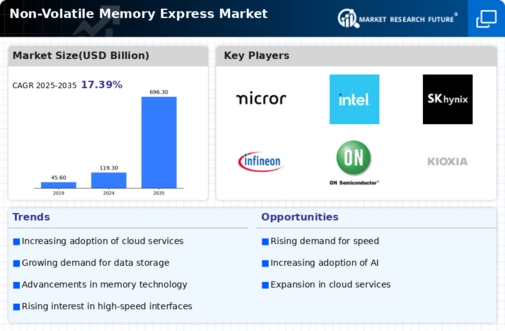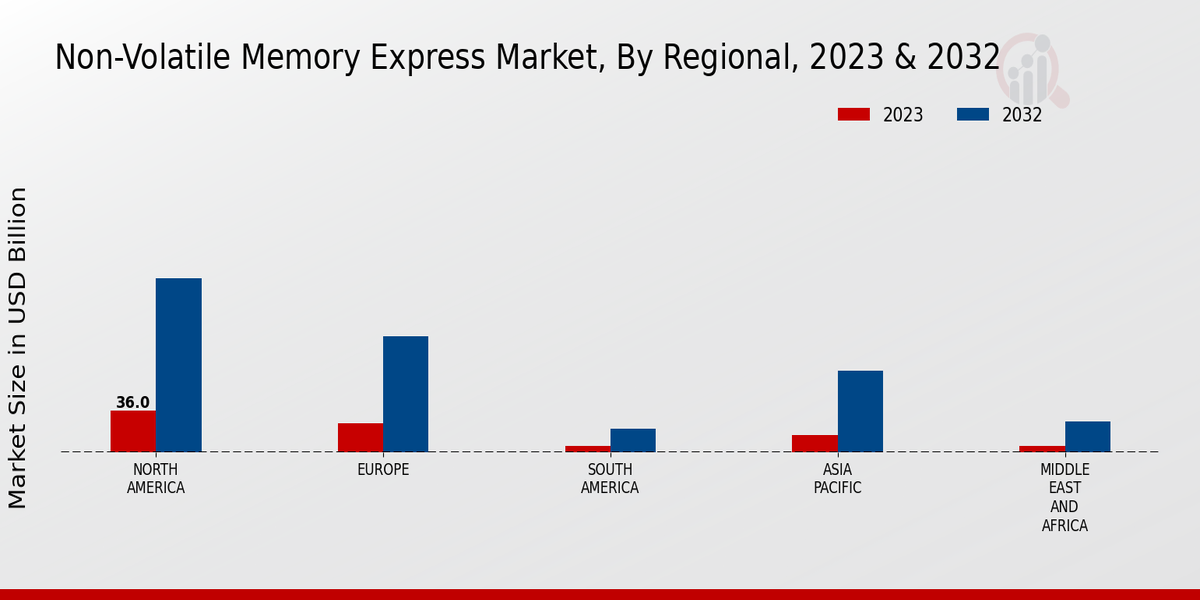Emergence of 5G Technology
The rollout of 5G technology is poised to have a profound impact on the Non-Volatile Memory Express Market. With its promise of ultra-fast data transmission and low latency, 5G is expected to drive the demand for high-speed storage solutions that can keep pace with the increased data flow. Industries such as telecommunications, automotive, and healthcare are likely to leverage 5G capabilities, necessitating advanced storage technologies like Non-Volatile Memory Express. As 5G networks become more widespread, the Non-Volatile Memory Express Market may witness a surge in adoption, as organizations seek to enhance their data processing capabilities and improve overall operational efficiency.
Advancements in Cloud Computing
The Non-Volatile Memory Express Market is significantly influenced by the rapid advancements in cloud computing technologies. As organizations migrate to cloud-based infrastructures, the demand for high-performance storage solutions intensifies. Non-Volatile Memory Express technology offers the speed and efficiency required for cloud applications, enabling faster data retrieval and processing. According to industry reports, the cloud storage market is anticipated to grow at a CAGR of 22% from 2023 to 2028, further propelling the adoption of Non-Volatile Memory Express solutions. This trend indicates a shift towards more agile and scalable storage options, positioning the Non-Volatile Memory Express Market as a key player in the evolving landscape of cloud computing.
Growing Adoption of Artificial Intelligence
The integration of artificial intelligence (AI) across various sectors is significantly shaping the Non-Volatile Memory Express Market. AI applications require substantial computational power and fast data access to function effectively. Non-Volatile Memory Express technology provides the necessary speed and efficiency, making it an attractive option for organizations looking to implement AI solutions. The AI market is projected to reach USD 500 billion by 2024, indicating a robust demand for high-performance storage solutions. As businesses increasingly rely on AI for data analysis and decision-making, the Non-Volatile Memory Express Market is likely to benefit from this trend, as organizations seek to enhance their data storage capabilities.
Increasing Data Generation and Storage Needs
The Non-Volatile Memory Express Market is experiencing a surge in demand driven by the exponential growth of data generation across various sectors. With the proliferation of IoT devices, social media, and big data analytics, organizations are compelled to adopt advanced storage solutions that can handle vast amounts of information efficiently. This trend is reflected in the projected growth of the data storage market, which is expected to reach USD 100 billion by 2026. As businesses seek to optimize their data management strategies, the adoption of Non-Volatile Memory Express technology becomes increasingly critical, offering faster data access and improved performance. Consequently, the Non-Volatile Memory Express Market is poised for substantial growth as enterprises prioritize high-speed storage solutions to meet their evolving data requirements.
Focus on Enhanced Performance and Reliability
The Non-Volatile Memory Express Market is driven by a growing emphasis on performance and reliability in data storage solutions. Organizations are increasingly recognizing the limitations of traditional storage technologies, which often struggle to meet the demands of modern applications. Non-Volatile Memory Express technology offers superior performance, characterized by lower latency and higher throughput, making it an appealing choice for enterprises. As industries such as finance, healthcare, and gaming require faster and more reliable data access, the demand for Non-Volatile Memory Express solutions is expected to rise. This focus on performance enhancement positions the Non-Volatile Memory Express Market for continued growth as organizations seek to optimize their data storage strategies.

















Leave a Comment